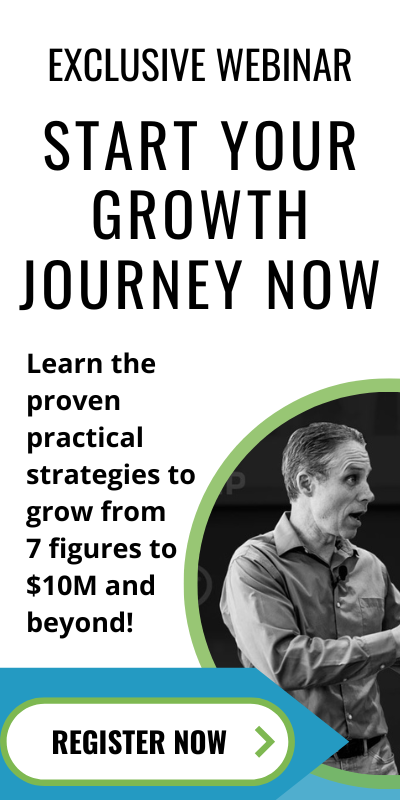Episode 122: Getting Clarity In Your Business, With Anita Grantham
Anita Grantham is a mission-driven culture champion that is passionate about building teams that inspire people to do the best work of their life. As a people- and culture-focused executive with experience in a variety of industries including technology, cloud-based marketing, construction/real estate, education, and customer experience, Anita has developed talent from multiple angles and has helped business leaders thrive in competitive environments.
Anita spent the last five years as Chief People Officer of Pluralsight, Inc, the leading technology workforce development company that helps companies and people around the world transform with technology. In her time there, Anita and team helped Pluralsight be recognized for awards such as 2020 Fortune Best Companies to Work For, Ranked number 10 on Fortune’s Best Workplaces in Technology 2020 list, 2020 Best Workplaces for Millennials by Great Place to Work and Fortune, ranking number 11 in 2020 for Utah’s fastest-growing companies for the seventh consecutive year. Anita was also honored with the For All Leadership Award by Great Place to Work.
When Anita is not working on Pluralsight’s culture or advising others on talent management, she is focused on building a winning culture at home with her husband, daughters, and dog.
What You Will Learn in this Episode:
- Why entrepreneurs forget why they started after hiring a team
- How to stop the breakdown of clarity in your business
- How to get clarity on your measurable outcomes for you and your employees
- What are the benefits of fractional executives
- How often should you check in and adjust your focus
- How many goals or tasks should you intend on accomplishing each day
Resources:
- LinkedIn: https://www.linkedin.com/in/anitakgran/
Additional Resources:
- Email: info@GrowWithElite.com
- Website: https://growwithelite.com/
—
For every single episode, I either bring a fantastic guest or something myself to share with all of you. I don’t always get to interview a friend. I get to interview somebody who knows her stuff, but somebody who I consider a dear friend as well. Let me introduce you to Anita Grantham. Anita was the Chief People Officer at Pluralsight. I’m not going to get into Pluralsight information. You can look it up if you want. You need to know that it’s a high-growth company.
Anita is right at the top of that people function and part of the executive team helping to make all of that go. They grew fast, went public, and then they took it back to private. There’s so much that she learned and did while she was there. She and I had the great opportunity of working at another fast-growing company. You’ve heard me talk about InfusionSoft in the past, and that’s when I met her. Anita, welcome to the show. Thank you for joining us.
Thank you, Brett. I’m excited to be here with you.
I need to tell everyone about the way that we met. When I first started at InfusionSoft, I was consulting for a little while, and it was a little bit of a, “We can’t afford to bring you in full time. Let’s try this before we fully buy in. Try before you buy.” I was one of those consulting people who turned into a leader inside the company. When I joined the company, the CEO, Clate, and I talked about Clate in these episodes in the past, we were trying to decide, “What do we call this role that I’m playing?” You’ll remember that we called it the Built To Last Champion. Because we’re such big Jim Collins fans, and I know you are as well, we said, “Let’s call it the Built to Last Champion role.”
Clate called it The Director of Built To Last, but I called myself the Built To Last Champion. We were set on building a great enduring company. That was the mantra. A couple of years later, my role was shifting. Clate created a new role, a little bit more strategic involvement with him. We were talking about who we would hire and what that person would be like. I said, “I might want to do that role.” He said, “I might want you to do that role.”
He hired me to do that role. The task was, “How do we find somebody to replace me in this Built To Last role?” I put out a resume or posting for something. One of your team members, Lauren, is the one who said, “You’ve got to talk to Anita.” I said, “Okay.” I looked at Anita’s stuff, and it was like I was looking at somebody who spoke my language. We talked and we hit it off. Anita needed to be the person. Anita was the Built To Last whatever she wanted to call herself when she came in after me. Truthfully, you did it better than I did.
I don’t know about that. You laid a fantastic foundation to play with. It was great.
That was a long lead-up to say we’ve known each other for quite some time. After InfusionSoft and all the great work you did there, you became the Chief People Officer at Pluralsight. How long were you at Pluralsight?
It’s been many years.
You’re on quite a ride there. I want to pick your brain around a topic that you’re amazing with, and that is around the clarity for a business owner and the leadership team or people that you might be hiring part-time to the leadership team to make sure we’re getting the results that we want. Let’s kick off the idea that. Just because we got proven leaders doesn’t mean we can ditch all of the proven things we know to do as leaders around getting clear. Sometimes leaders do that. Why do business owners ditch clarity when it comes to themselves and the rest of the team?
I love the Jim Collins tee-up. You and I have been on a quest for 10X returns for over one decade. It’s a true Built To Last organization. If you look at entrepreneurs, they come up with a great idea. They’ve got their great passion. They know how they’re best in the world and their economic engine. They get clear in that startup mode. As soon as they start to add people to their team, they forget about where they started at times because there’s much to do and to focus on.
The thing that you and I have aligned on here is we want to bring founders back to say, “What am I great at? What am I going to deliver on?” and still keep that maniacal focus, which Jim Collins also talks about of what you say no to. It is staying true to what you know you’re great at, doubling down on that, and putting a team around you of people who do other things.
Stay true to what you know you're great at, double down on that, and put a team of people around you who do other things. Share on XThe best ones see clearly the need to bring in other team members, organize the work, and give ownership to others like, “Get it off of me.” A lot of times, we don’t see that to the end. We start with the idea and we don’t get to the clarity that’s needed for that to work well. Where do you think it breaks down or how can we keep it from breaking down?
One thing about founders that I’ve experienced is they’re moving from one thing to the next all of the time. It’s easy to be in the detail. Some of the greatest founders you and I have worked with understand their place, zoom out, and stay committed to the zoom out versus diving in and solving all the problems. There’s a great book around entrepreneurship that talks about this like, “Are you working in the business or working on the business?”
Michael Gerber, The E Myth.
We love Michael Gerber. The greatest founders stay in the business because as soon as they get pulled in for that fire, or they don’t give them a timeframe, like, “This is a fire. I’m going to give myself 90 days to replace whatever was burning, handle it, and then I’m going to back into my role,” but the fire leads to the next fire. They forget this in the business. They’re just in the business. They’re addicted to being in the business.
It’s hard for them because they spent the first however many years being all in the business. Their commitment level hasn’t died down any, but they have to extract themselves from being in it so that they can keep building the business.
You know this because you’ve built this business from scratch. We own a bar restaurant. I remember my husband and I would have arguments around the talent or the lack thereof in the restaurant. I’d say, “You need to fire that bartender, cook, or whatever.” He’d say, “Do you want me gone seven nights a week? It’s eight-hour shifts and that’s what it is.” There are real conversations that small business owners have to think about when they make those changes. It’s not easy. I have real empathy for the impact of those changes on life.
If you don’t make those changes, then you’re stuck in this never-ending loop of, “I got to be in it. I’m still in it.” If you want that for yourself, then don’t make the change. The change is painful, but the alternative is to stay stuck where you’re at. It’s not like a lose-lose proposition, but sometimes we frame it that way in our brains. We’re like, “This is painful to stay how it is, but it’s more painful to make the change.”
Ultimately, it comes back to where you feel value. Oftentimes, we’re not confident enough in ourselves to lead what we know well that we can do to go work on the business at the next phase. You might be more committed to staying in the business where it’s at versus growing it. Those are the real conversations that you’re having every day about what you’re committed to. You have to adjust your focus at every stage. It doesn’t change when you move out of small business land, whether it’s $500,000 to $1 million, $5 million, or $10 million to $100 million mark. We have to continually recreate ourselves as leaders at every single phase.
We stay where we’re at and/or decline back to a more comfortable place for us or whatever. Let’s circle back to this idea that most founders and owners that we know and love have a hard time getting clarity, in our language, in the big three or their OKRs, their key objectives, or whatever language you want to put on it. It is the key measurable responsibility of the owner. Some struggle with this was like, “What do you mean my thing?” I do whatever needs to happen, and they never want to nail down themselves with structure and say, “These are the three that I own. These are however many that I own and I must deliver.” What have you seen with that and why do you think that is?
The reason why is all the things that we’ve talked about. If the founder doesn’t do it, no one else will. We talk about vision, values, leadership and the CEO being the model. The CEO or founder has to be the model of relentless pursuit of clarity on the work to be done and the outcomes. If they don’t know what that is, I don’t know how they effectively hire people around them.
The CEO or founder has to be the model of relentless pursuit of clarity on the work to be done and the outcomes. Share on XI want to dig in on that specifically because more and more in the last few years, I’ve heard the idea of fractional. I heard part-time CFO, and then it was mostly part-time CFOs, and then it crept into, “We can have a part-time CMO or revenue officer.” This fractional thing came out, and now you can have a fractional executive over any function pretty much. I love this. It’s great. Before you can afford it full-time, you get some of the benefits and experience. You get to see if they are a good fit with your culture. There are many good things about a fractional executive or leadership arrangement, but how do you make sure there’s enough clarity to make it work?
I’ve said this in my teams that are not fractional. They’re full-time salary team members, “I don’t care how many hours you work as long as we’re clear on the outcomes.” I do think that is the future of work. Whether it’s fractional, part-time, or full-time, get rid of the hours associated. I want outcomes. I don’t want hours. Similarly, like if you have training. I want something easy that everybody hears. I want them to spend this much time on sexual harassment training, but that doesn’t mean that they’re not going to be offenders.
We care about outcomes and building a better work environment that has people who are aware of the things that are happening there. The outcome is a more aware, mature, working environment by people who understand the laws and implications of breaking those laws within the work environment. Those are the outcomes that we don’t know how to focus on.
This is why people don’t do big three work. It’s hard. It has taken me years. I still have to work at it every time when putting it together and saying, “What does it take to measure? What does it take to know that I’m making progress?” You can do it in any role. The founder has to be the best and must be the demonstration because, otherwise, they can’t look across all the work streams and say, “Am I going to hit this vision? Am I lined up to hit Everest?” This is where we see the constant disconnect between Everest and the day of work. The founder has to create it.
When you say Everest, and not everybody knows that terminology, you mean the mission or the big objective over 3 to 5 years or somewhere in the future, the big thing that we’re after. The best founders have a big thing that they’re up to. We’re going to go do this together, this big thing. They’ve co-created that ideally with the team, at least the right team members. They’re all aligned this to this big thing, but then we got to bring it back and say, “How does each role contribute? What does each role own? How will we clearly measure the outcome and results?” You said it was hard. Why is this hard? Are we making this too hard on ourselves?
Part of it is as small businesses, like in my own small businesses or working with small business owners, we’re not set up from a data standpoint. I don’t think the tool exists to measure effectively. There are some key things. You and I would say, “Revenue should be easy to manage,” but for a lot of small business owners, it’s not. It is revenue versus expense, “Do I know what that is? Am I committing to a certain margin? Am I clear on what that is? Am I clear on what I need to generate at the top of the funnel from lead generation to deliver on that revenue?” To me, those would be the simplest. For a lot of small businesses, they’re hard to figure out. That’s where you’d want to start. You probably have 5 to 7 top KPIs for any business.
Those are the things that have to be measured first. Sometimes we get stuck on the periphery, and it’s staying clear on the vision and what we’re going to do, then maybe it is creating a measurable system for customer retention. Anytime I talk to a business, those are the things I ask, “What’s your run rate? What’s your retention rate? How much cash are you burning?” That tells me the overall health of your business. Let’s tile in those metrics, and then we can go into the next phase of indicators and leading, lagging, and all of those pieces.
You hit on something important that people need to understand. You don’t have to be perfect at this out of the gates. Start where you are, but then you’d be consistent with measuring and say, “This is what we expect to get. Where are we?” You don’t have to leave it there forever. We always talk about, “For this quarter, for this next 90 days, where’s your focus? What are the measurements?” We’ll check in on that again and say, “Are those still the right measures? If so, we keep going the next 90 days, but if not, let’s make an adjustment.”
We started a new quarter, for most of us. Are we checking in? Our first check-in should be November 1 on that 90-day, and then December 1, because then you have time to change it. If you start October 1 and you don’t check in on it until December 20, we’re done. That didn’t work. It didn’t drive the focus. If you’re not using it in every one-on-one, in every leadership meeting, and in everything that you’re doing, you might as well not have them. Otherwise, it’s got to be integrated. This is where a lot of people struggle with the operational cadence of the business.
It’s got to be built right in or gets lost. It gets sidelined and ignored. I love that added perspective. By the time this particular episode airs, it might be in January, but it doesn’t matter when you’re reading this. Take what you’re saying and apply it to where you’re at. You mentioned check-ins each month to make the adjustments. I get that for a senior leader, an executive, or a business owner, but everything we’re talking about applies to every role in the business. I love that you said one-on-ones. People need to be doing these check-ins on a weekly basis with their direct reports and say, “How’s it going?” It shouldn’t be a surprise. We’re going to check in on the thing that you own and how we measure that success.
I’m on a sabbatical now, and I have four things that I’m committed to doing every day. At the beginning of the day, I still have a calendar. I still look at how I’m allocating my time, and at the end of the day, I think back and I’m like, “Did I get at least 3 of those 4 things done today?” I want to know that I’m winning in what I’m committed to.
I don’t want this sabbatical to go by and say, “I didn’t do all of these things.” It’s the same thing, but I love testing it to see what the difference is. There’s no difference. As a business owner, a department leader, or whatever, what are the four things that you do to move the map or the marker? If you didn’t win whatever winning was for you last quarter, what would you have doubled down on this quarter? How would you have gotten more focused? What would you have said no to drive the clarity and outcomes for this next quarter?

Clarity In Business: As a business owner, a department leader, or whatever, what are the four things that you do to move the map or the marker?
If people could see your intentionality muscle, they would see it bulging now because you left that Pluralsight and now you’re on the sabbatical. You still know the power of intentionality and clarity, which includes some measurements for yourself. That’s the piece that’s missing in a lot of business owners that we’ve worked with. Let’s circle back to the idea of a fractional revenue officer, fractional CFO, or fractional leader. What would you recommend by way of getting absolute clarity with this person who’s going to come and you’re going to pay them a decent sum of money to do some important work for your business? How do you make sure that value transfer is going to happen?
It is through this clarity. If we take those top metrics, like revenue, expenses, margin, and pipeline, let’s say you want to hire a fractional CFO so that you make sure all those things are categorized. There are a number of different accounting formats to put those things in that work for taxes and all of the things that we do. Make sure that those buckets are accurate. Make sure you can speak to those things.
That’s what you’d want, that fractional CFO to come in and do, and to align on a system where if you’re winning or losing throughout the quarter so you can make changes in it. My struggle with all accounting work is it’s 90 days in arrears. I want to know that if my pipeline isn’t strong that I can do something in the next six weeks to increase the pipeline so I have a better close rate.
Is it sales-generated or marketing-generated? It is how I measure those two and then go and address the problems in the business I need. I hear this all the time. Founders say, “I need things to go off my plate.” I want to know exactly what that means. What is it I’m taking off your plate? What is it I’m responsible for? I use this statement all the time, but it is the knots clarity. You have to know the specifics of the knots and say, “This is part of the knot that you get, and this is what I get. If we don’t deliver on it, what happens to the business?” We don’t have that conversation.
As soon as you know that our pipeline is off, you’re coming and telling the team the second you know it and you say, “I’m seeing numbers and they’re coming down in digital events, all of those things. I’m seeing numbers drop in all those areas of the pipeline and I’m coming and telling my revenue leader, my ops people, that we have a problem. We need to gather around and figure out what we’re going to do.” It’s those conversations that increase the level of accountability and outcomes that we all want to grow our businesses or even keep them the way they are. There’s nothing wrong with the lifestyle business. You can do that, but what do you want? I don’t know.
There’s a big difference between paying a functional leader to hold that function and try to hold it up for you in some generic abstract way or getting clear on the outcomes you want that person to drive, how it’s going to be measured, and how it aligns to the business goals. We don’t take that important last step of driving clarity between lots of people, whether it’s a fractional CFO or our frontline support person.
We got to get clear on what’s expected, how it’s going to be measured, and how it aligns with company goals so that we can have the type of ownership that you described, or if something starts to go off, that new owner who has some accountability can come to the team and say, “I own this number. Something’s off. I need the team.” Ownership doesn’t mean isolation. It doesn’t mean by themselves. It means they’re watching very clearly the established measure of success so that they can sound the warning bells, rally the team, and do whatever’s needed to make sure it stays on track.
I would take it as a red flag if you’re trying to hire a fractional somebody and they don’t ask you these questions. Great talent will say, “What am I going to go deliver on? What’s my mission? What’s my target? What’s the problem I’m going to solve for you? What do I get to sink my teeth into?” Great talent will want to be measured against that.
Oftentimes, it’s interesting, especially in this time, The Great Resignation. The problems are the same as that we’re not clear on the work or job to be done like three clicks in, and then you can go sell the job because just like we’re painting the vision for the organization, we’re painting the vision for the role. That’s what gets people excited and stay.

Clarity In Business: Just like we’re painting the vision for the organization, we’re painting the vision for the role.
That clarity breeds confidence. The best people are asking for it because they want to know what success looks like so they can be successful. We get this wrong and you and I could go round and round on this for hours. It’s been fantastic. If people want to learn more about you or connect with you in any way, is there some way for them to do that? You’re not a social media person, I know that.
I am a LinkedIn person. I love LinkedIn as the platform. LinkedIn messages are the way.
Go check out Anita Grantham on LinkedIn. Connect with her if you want to continue this conversation or many others. She’s super talented in all things, people, strategy, organizational effectiveness, and great culture. She’s amazing. Thank you for being with us. It was fun to talk.
Thank you.
Your insights will be super valuable for our readers. Readers, share, like, review and do all that stuff to make sure that as many business owners as possible get to read this episode with Anita. You can go back and read. No amount of reading will do anything for you if you don’t take action. Take what Anita shared, apply it, get clarity for yourself as the business owner, and make sure everybody on your team knows what’s expected, how it will be measured, and how it aligns with the company goals so you can drive the success you’re looking for. Thanks for reading and join us again next time for another episode.
Important Links
- Pluralsight
- The E Myth
- LinkedIn – Anita Grantham
Want to listen to more? View all episodes here >



